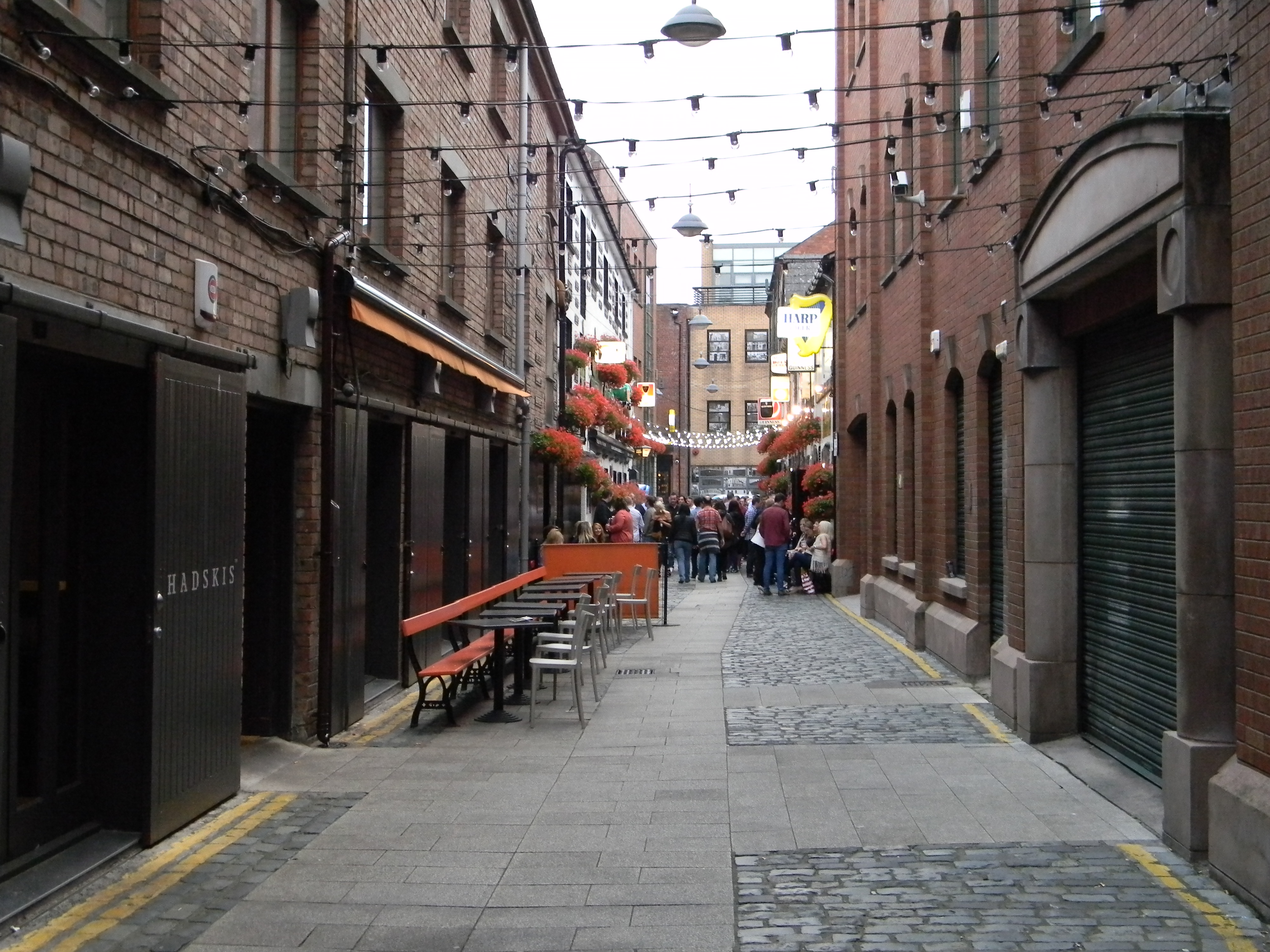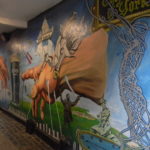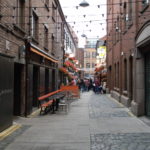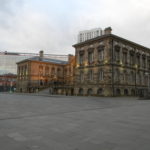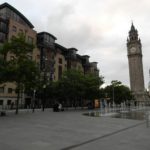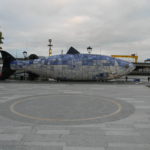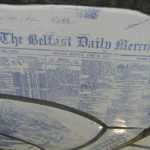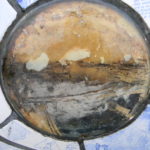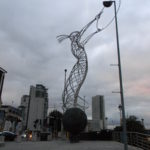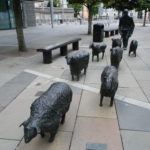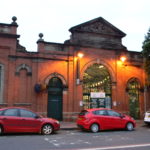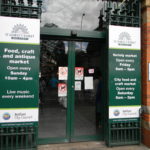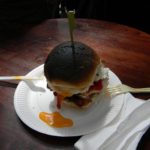Today, the High Street in Belfast is a vibrant shopping street, but back in the 17th century, a river flowed down here instead. Ships used to dock along the banks and seamen were lodging close by. The area could be described as: “The sandy ford at the mouth of the Farset” – or ‘Beal Feirste,’ giving Belfast its name.
In the first blog article about Belfast, we took a stroll from the City Hall to St. Anne’s Cathedral. This time, we will have a closer look at the Cathedral Quarter and the Waterfront of Belfast.
Cathedral Quarter and Custom House
In some street names, like Skipper Street, you can still see the connection between the Cathedral Quarter of today and the docks of the 17th century. Pot houses, tanneries, coppers, and slaughter house were common in this part of town, and its remains give the Quarter its rugged charm.
Tipp: Do not stay on the main roads, get lost in the first side street you find and enjoy the unique atmosphere.
One of the most impressive buildings around is the Custom House. Its square is popular for concerts and events today. The building itself is Victorian, finished in 1857. The Custom Service, the Post Office, Stamp Office as well as the Inland Revenue and Government Emigration Departments were located here. The sculptures of Neptune, Mercury, and Britannia are positioned far up on the façade of the building, looking down on every visitor. The statue of a man in a three-piece suit stands close to the stairs of the Custom House, facing the square. His hands are raised into the air, one holding a piece of paper, his mouth half open – he speaks to an imaginary crowd, symbolizing all the speeches that were held from these stairs.
Albert Memorial Clock and the Big Fish
The vast custom house square leads to a water fountain and the Albert Memorial Clock. The fountain is integrated into the ground so that you can (theoretically) run through the water that shoots up in thin jets, following its own rhythm. Watching that spectacle for a while from a park bench is definitely worth it.
Right behind the fountain stands the Albert Memorial Clock. As the name suggests, it was built in a memorandum of Prince Albert, husband of Queen Victoria. The Albert Memorial Clock was erected in 1865. Within the last 150 years, it has slanted significantly. In a recent renovation, the drift of 1.25 meters off the vertical was corrected.
Walking up to river Lagan, I finally found the so-called ‘Big Fish.’ I have read about it in my tourist guide and was very curious to see it for real. It is a big sculpture of a fish with blue and white tiles symbolling its scales. When taking a closer look, I noticed that the white tiles have all sorts of blue imprints on them, like for example, the local buildings or a local newspaper article, dating back to the 19th century. When looking into the yellow eyes of the fish, I could see pictures of the Laganside River area before the Waterfront was renewed.
The Waterfront, the Beacon of Hope and the Titanic Museum
The big fish sculpture is one of many visual sights connected to the rebuilding of the Laganside area. This part of town had been neglected for a long time and therefore was decrepit. The Laganside Corporation was formed by the government back in 1989 to revitalize the area. The project was finished in 2007, with about 1 billion Pounds spent. Today, Belfast’s waterfront is an eye-catcher, with a nice riverside promenade, modern buildings housing apartments, restaurants, and hotels.
Walking along the river to the south, I passed another remarkable sculpture. It is called the Beacon of Hope and looks like a woman standing on a globe, holding up a hula hoop. It symbolizes oneness as well as diversity and stands for hope, aspiration, peace, and reconciliation. The visualization of the woman is connected to Classical and Celtic mythology.
Standing there at the river, I could see the yellow Harland & Wolff cranes on the other side. Over there, the futuristic looking building of the Titanic Museum is located. As a modern museum, it offers an interactive experience with video screens and info portals. Visitors get to dive into the history of shipbuilding in Belfast and experience how traveling on a ship was like back then. Ship cabins were rebuilt, giving holograms of actors the perfect stage to re-enact the life on a ship. There are of course also special tours and workshops for children, and the revenue can also be booked for events, e.g. company events or weddings.
St. George’s Market and Belfast Bap
Visiting the St. George’s Market is a must at least once during your stay in Belfast. Close to the Waterfront, the market is located in a Victorian building erected between 1890 and 1896. The tradition of the market goes back way further though. Since 1604, a Friday market has taken place on those grounds. Also today, it is a weekend market being open from Friday to Sunday. Thereby, each day is under a different focus. I recommend the Sunday which is a combination of the Variety Market of Fridays and the Food Craft and Garden Market of Saturdays. Strolling past the stands, you will find antiques, clothes, jewellery, souvenirs, books and of course local food, accompanied by live music of local artists.
Tipp: Try the Belfast Bap – the round, crusty bread is the name-giver of this local speciality, typically filled with all kind of things, e.g. meat, bacon, egg and much more.
Don’t want to miss the next post? Subscribe to my Newsletter.
